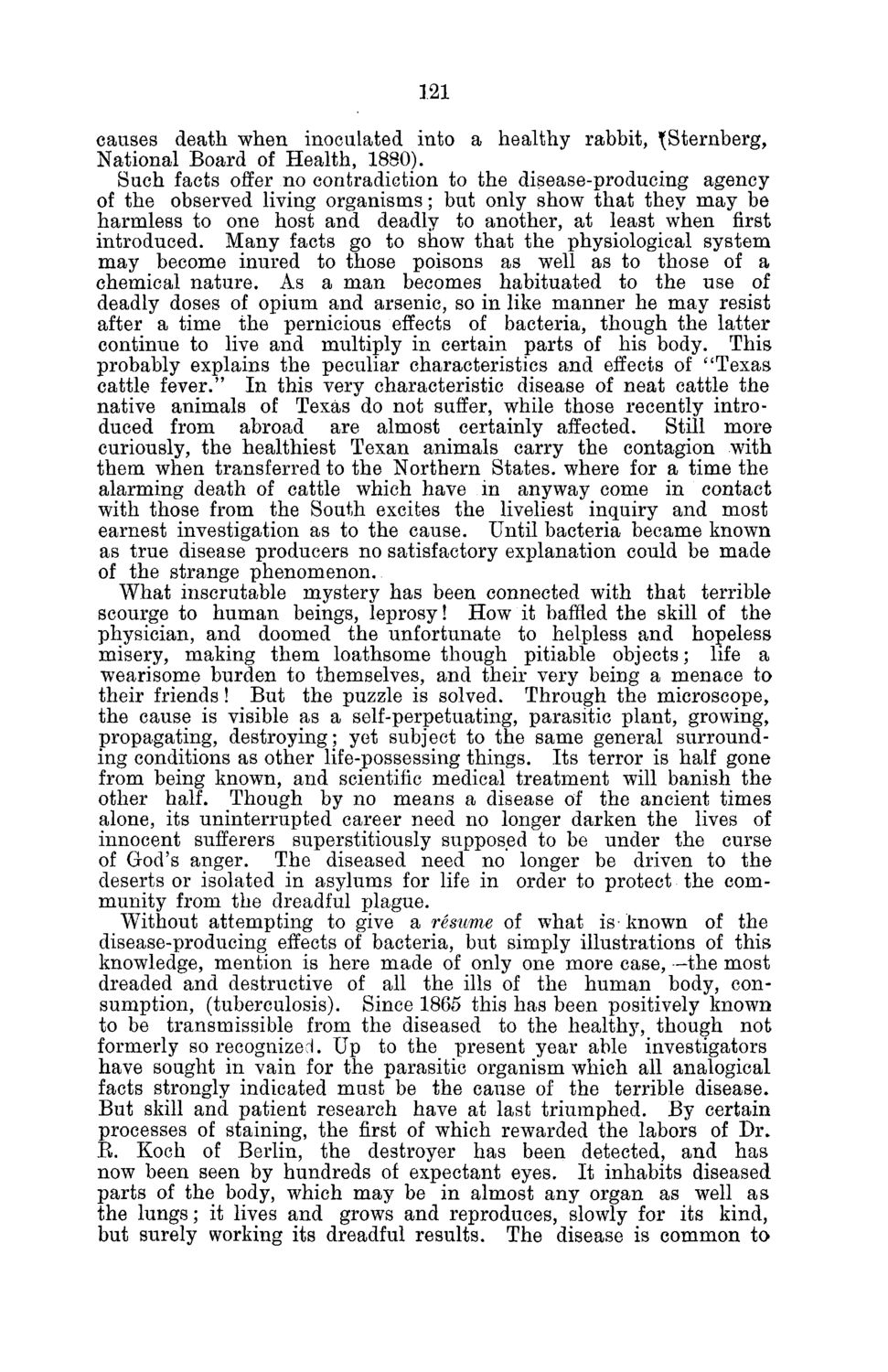| |
| |
Caption: Board of Trustees Minutes - 1882
This is a reduced-resolution page image for fast online browsing.

EXTRACTED TEXT FROM PAGE:
121 causes death when inoculated into a healthy rabbit, "(Sternberg, National Board of Health, 1880). Such facts offer no contradiction to the disease-producing agency of the observed living organisms; but only show that they may be harmless to one host and deadly to another, at least when first introduced. Many facts go to show that the physiological system may become inured to those poisons as well as to those of a chemical nature. As a man becomes habituated to the use of deadly doses of opium and arsenic, so in like manner he may resist after a time the pernicious effects of bacteria, though the latter continue to live and multiply in certain parts of his body. This probably explains the peculiar characteristics and effects of "Texas cattle fever." In this very characteristic disease of neat cattle the native animals of Texas do not suffer, while those recently introduced from abroad are almost certainly affected. Still more curiously, the healthiest Texan animals carry the contagion with them when transferred to the Northern States, where for a time the alarming death of cattle which have .in anyway come in contact with those from the South excites the liveliest inquiry and most earnest investigation as to the cause. Until bacteria became known as true disease producers no satisfactory explanation could be made of the strange phenomenon. What inscrutable mystery has been connected with that terrible scourge to human beings, leprosy! How it baffled the skill of the physician, and doomed the unfortunate to helpless and hopeless misery, making them loathsome though pitiable objects; life a wearisome burden to themselves, and their very being a menace to their friends! But the puzzle is solved. Through the microscope, the cause is visible as a self-perpetuating, parasitic plant, growing, propagating, destroying; yet subject to the same general surrounding conditions as other life-possessing things. Its terror is half gone from being known, and scientific medical treatment will banish the other half. Though by no means a disease of the ancient times alone, its uninterrupted career need no longer darken the lives of innocent sufferers superstitiously supposed to be under the curse of God's anger. The diseased need no longer be driven to the deserts or isolated in asylums for life in order to protect the community from the dreadful plague. Without attempting to give a resume of what is known of the disease-producing effects of bacteria, but simply illustrations of this knowledge, mention is here made of only one more case, —the most dreaded and destructive of all the ills of the human body, consumption, (tuberculosis). Since 1865 this has been positively known to be transmissible from the diseased to the healthy, though not formerly so recognized. Up to the present year able investigators have sought in vain for the parasitic organism which all analogical facts strongly indicated must be the cause of the terrible disease. But skill and patient research have at last triumphed. By certain processes of staining, the first of which rewarded the labors of Dr. B. Koch of Berlin, the destroyer has been detected, and has now been seen by hundreds of expectant eyes. It inhabits diseased parts of the body, which may be in almost any organ as well as the lungs; it lives and grows and reproduces, slowly for its kind, but surely working its dreadful results. The disease is common to
| |